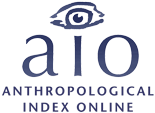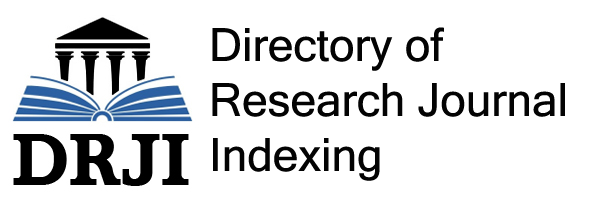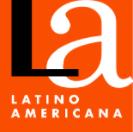When blood circulates like money: population economics and HIV/AIDS in rural central China
Keywords:
HIV/AIDS, economy, epidemiology, ChinaAbstract
This ethnographically informed epidemiology focuses on a politically sustained population economics as a decisive determinant bringing about and shaping the HIV/AIDS epidemic among rural commercial blood donors in central China. The political management of populations as economic resources is most becomes more evident when a confluence of circulating economic spheres creates the conditions for the extraction of value, not from labor, but from human plasma obtained from agricultural producers. In the context of China’s political culture, the epidemiological “vulnerability” in this case study reveals contradictions in the kind of economic rationality that intervens in the protection of a population.
References
Anagnost, Ann (1995). “A Surfeit of Bodies: Population and the Rationality of the State in Post-Mao China”, en: Conceiving the New World Order: The Global Politics of Reproduction. Berkeley, University of California Press, pp. 22-41.
Baer, Hans A. (1982). “On the Political Economy of Health”,Medical Anthropology Newsletter,Vol.14, N° 1,pp. 1-2; 13-17.
Boseley, Sarah (2007). “UN Lowers Estimate of Worldwide HIV/Aids Cases by 6m”, Guardian, 21 de noviembre, documento electrónico: www.guardian.co.uk/world/2007/nov/21/aids. Society, acceso 4 de febrero de 2013.
Chen, Suliang; Zhikun Zhang, Yong Zhaoet al. (1994). “An Epidemiological Study on Malaria Infection in Plasmapheresis Donors”, Chinese Journal of Disease Control and Prevention, Vol. 8, N° 6, pp. 350-352.
Chen, Suliang; Hongru Zhao, Degui Sunet al. (2010). “Study on the Origin of HIV Outbreak among Plasmapheresis Donors in Hebei Province”, Chinese Journal of Disease Control and Prevention, Vol.14, N° 9, pp. 848-851.
Cochrane Injuries Group (1998). “Human Albumin Administration in Critically Ill Patients: Systematic Review of Randomised Controlled Trials—Why Albumin May Not Work”, British Medical Journal,317 (7153) pp. 235-240.
Erwin, Kathleen (2006). “The Circulatory System: Blood Procurement, AIDS, and the Social Body in China”, Medical Anthropology Quarterly, Vol. 20, pp. 139-159.
Farmer, Paul (2001). “An Anthropology of Structural Violence”, Current Anthropology, Vol. 45, N° 3, pp. 305-333.
Fassin, Didier (2003). “The Embodiment of Inequality: AIDS as a Social Condition and the Historical Experience in South Africa”,Science and Society, Vol. 4, número especial.
Guyer, Jane I. (2004). Marginal Gains: Monetary Transactions in Atlantic Africa. Chicago, University of Chicago Press.
Harvey, David (2007). A Brief History of Neoliberalism. Oxford, Oxford University Press.
House, James S. (2002). “Understanding Social Factors and Inequalities in Health: 20th Century Progress and 21st Century Prospects”, Journal of Health and Social Behavior, pp. 125-142.
Link, Bruce G. y Phelan, Jo (1995). “Social Conditions as Fundamental Causes of Disease”, Journal of Health and Social Behavior, número especial “Forty Years of Medical Sociology: The State of the Art and Directions for the Future”, pp. 80-94.
Liu, Junxiang y Youchu, Ji (1989). Dancai xuejiang shu shouche [Plasmaphereisis handbook]. Beijing, Remin Weishen Chubanshe [People’s Health Publisher].
Nguyen, Vinh-Kim y Peshard, Karine (2003). “Anthropology, Inequality, and Disease: A Review”, Annual Review of Anthropology, pp. 447-474.
Ministry of Health (1984). Weisheng bu, duiwai jingji maoyi bu, haiguan zhongshu guanyu xianshi jingkou xuezhibing fangzhi AIDS chuanru woguo de lianghe tongzhi [ Joint Circular by the Ministry of Health, the Ministry of Foreign Economy and Trade, and the General Administration of Customs on restricting imported blood products in order to prevent the spread of AIDS into our country], documento electrónico: http://www.people.com.cn/item/flfgk/gwyfg/1984/407106198404. Html, acceso mayo de 2013
Polanyi, Karl (2001). The Great Transformation: The Political and Economic Origins of Our Time. Boston, Beacon Press.
Qian, Han-Zhu; Yang, Zhongmin; Shi, Xiaominget al. (2005). “Hepatitis C Virus Infection in Former Commercial Plasma/Blood Donors in Rural Shanxi Province, China: The China Integrated Programs for Research on AIDS”, Journal of Infectious Diseases, Vol. 192, N° 10, pp. 1694-1700.
Shao, Jing (2006). “Fluid Labor and Blood Money: The Economy of HIV/AIDS in Rural Central China”, Cultural Anthropology, Vol. 21, N° 4, pp. 535-569.
Shao, Jing, y Scoggin, Mary (2009). “Solidarity and Distinction in Blood: Contamination, Morality and Variability”, Body & Society, pp. 29-49.
Singer, Merrill (1998). “Forging a Political Economy of AIDS”, en: The Political Economy of AIDS. New York, Merrill Singer ed.State Council AIDS Working Committee Office and U.N.
Theme Group on HIV/AIDS in China (2004). A Joint Assessment of HIV/AIDS Prevention, Treatment and Care in China, documento electrónico: http://www.chain.net.cn/aidsenglish/material/technical/JAREng04.pdf, acceso julio de 2004.
Vermeulen, L. C.; Ratko, T. A.; Erstad, B. L.; Brecher, M. E. y Matuszewski, K. A. (1995). “A Paradigm for Consensus: The University Hospital Consortium Guidelines for the Use of Albumin, Nonprotein Colloid, and Crystalloid Solutions”, Archives of Internal Medicine N°155, pp. 373-379.
Wang, Meng; Wu, Shuhuang; Wang, Zhe y Yu, Jianbin (2011). “Influence of AIDS Mortality on Life Expectancy in a Township Abounds with Former Paid Blood Donors in 2005 in Henan Province”, Modern Preventative Medicine, 38 (24) pp. 5216-5217.
Wang, Shuping; Ding, Hong; Zhang, Hongqiet al. (1994). “Hepatitis C Virus Infection among the Plasmapheresis Donors”, Chinese Journal of Epidemiology, Vol. 15, N° 2,pp.71-73.
Wei, Shaofeng (2005). “Xuezhipin: You qunxiong fenzheng jinru guatou longduan” [Blood products: From competition to monopoly], Yiyao jingji bao [Economic news in pharmaceutics], documento electrónico: www.yyjjb.com.cn/articledetail05.asp?id=17, acceso 27 de mayo.
Wu, Zunyou; Rou, Keming y Cui, Haixia (2004). “The HIV/AIDS Epidemic in China: History, Current Strategies and Future Challenges”, en: AIDS Education and Prevention: Official Publication of the International Society for AIDS Education. New York, Guilford Press.
Zhai, Lijie; Fu, Xiujuan y Wang, Zhuowei (2008). “Cong woyuan renxue baidanbai de linchuang yingyong fengxi qi jinque de yuanyin [The shortage of human albumin resulted from analysis of prescriptions in the hospital]”, Zhongguo yaoshi [Chinese pharmaceutical affairs], pp. 431-434.
Zhang, Fujie (ed.) (2004). Manual for Free Government Antiretroviral Therapy. Beijing, Chinese Center for Disease Control.
Zhang, Fujie; Zhou, Shuntai; Chen, Xiet al. (2012). “Seroprevalence of HBV and HCV among HIV-Infected Adults in China according to Route of HIV Infection: High Rate of HBV and HCV Exposure”, Future Virology, Vol. 7, N°710, pp. 1015-1020.
























